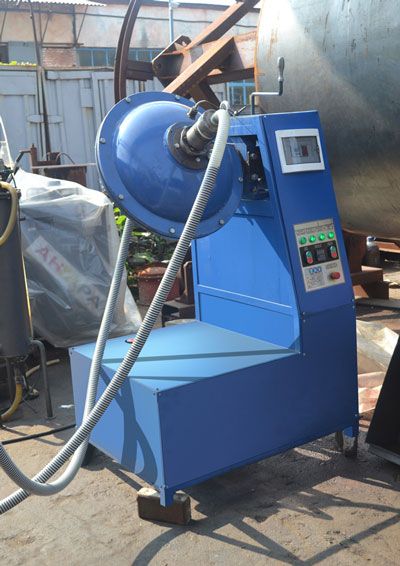
FOB Price
Get Latest Price|
Minimum Order
Place of Origin:
-
Price for Minimum Order:
-
Minimum Order Quantity:
1 Unit
Packaging Detail:
wooden crate
Delivery Time:
2 weeks
Supplying Ability:
50 Unit per Month
Payment Type:
T/T, L/C
Ukraine
Contact Person Ms. Oksana
8 Sadovskogo Str, Poltava, Other
Wastewater containing chromium and other heavy metals, is highly toxic effluents which require high-quality and efficient purification.
Such effluents formed during electroplating, other types of chemical, electrochemical surface treatment of metal products such as chromium-plating, nickel-plating, copper-plating, zinc-plating, cadmium-plating and also during some technological processes. These effluents compose ****0% of the total wastewater generated in the enterprises.
The required degree of wastewater treatment shall be based on the effluent requirements and water quality standards established by the responsible province, state agency and/or appropriate federal regulations including discharge permit requirements.
According to State Standard of Ukraine such wastewater when they arrive at the city sewage treatment plant should not have: pH value less than 6.5 and high than 8.5, the content of hexavalent chromium (Cr6+) in excess of 0,1 mg/dm3; trivalent chromium (Cr3+) - 2,5 mg/dm3, cooper – 0,5 mg/dm3, nickel - 0,5 mg/dm3, zinc – 1 mg/dm3, iron - 0,5 mg/dm3, cadmium - 0,1 mg/dm3, and other impurities up to maximum permissible concentration (MPC).
For concentrations of contaminants these wastewaters can be divided into two main groups:
- low-concentration wastewater;
spent and concentrated solutions of electrolytes.
By the nature of the major impurities of wastewater, their volumes and revenues when they arrive at the sewage treatment plant divided into two types:
- chromium-containing waste water (containing acids, alkalis, and principally a chromium compound);
- acid-alkaline wastewater (containing acids, alkalis, and salts of heavy metals).
The main quantity of these types of wastewater comprise scouring water, which composition is formed by diluting in water processing solutions, as well as coating and further washing products.
Such waste water arrives at purification plants during the all working day continuously, and spent process solutions and electrolytes with a high concentration of salts of heavy metals arrives at purification plants periodically.
In this case chromium-containing waste water comprise ****0% from total amount of sewage, acid-alkaline wastewater – ****0%.
The main components of wastewater on different enterprises are chromium, copper, zinc, iron, nickel, cadmium.
Their content and the amount determined by the concentration of electrolytes in processing tank for products covering, also by the mode of product flushing, its amount and configuration.
The concentration of Cr6+ in the chromium-containing wastewater is changed over a wide range from *0 to **0 mg/dm3, and can achieve ***0 mg/dm3 when entering to the scouring sewage of spent solutions and electrolytes; pH value is changed in the range from 2 to 7. In this case the chromium-containing wastewater may contain small number of other metals (****0 mg/dm3). Contents of Cu, Ni, Zn, Fe, Cd in acid-alkaline wastewater also is changed over a wide range and can be achieved: ****0; *****0; ****0; *****0; *****0 мг/дм3, рН **9 accordingly.
On the basis of the information from the enterprises which are produce equipments for the food industry and its inspection authors obtained fuller information of wastewater content. That information was used for the development of effective methods of wastewater treatment by using ABC (intensifier of technological processes).
The analysis showed that the major changes in the concentrations of pH value of the effluents takes place by reason of the absence of intermediate containers (****0 times), that would provide a reliable and efficient operation of treatment facilities with the required quality of cleaning.
In research and development of new and effective methods of treatment using Intensifier of Technological Processes ABC***0 all this information was taken into account.